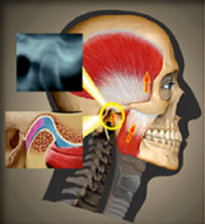Patient Education Materials
Click the links in each of these to see the pamphlet that addresses each of these conditions
• Understanding and Caring for Your Jaw Problem
Problems related to the function of the jaw system are poorly understood within the dental profession due to very limited training in dental education. For this reason, sometimes these problems are overlooked in routine dental examinations, or well-meaning treatment may prove to be inadequate. When identified in their earliest presentation, they are very treatable. If they are allowed to progress to the point of being an urgent need, such as with significant pain or difficulty getting the mouth open, they are more challenging to treat and the outcome of treatment may be less than it might have been if treatment had been started earlier. This pamphlet will provide you with additional information: Understanding TMJ
• Sleep Hygiene — How To Improve Sleep Quality
The need for sufficient quality sleep has been recognized as vital to good health. Sleep disorders are a major health problem. Pain problems are made worse when a patient is not getting enough quality sleep. This pamphlet will give you some guidelines for maximizing the quality of your sleep. But if you think that you may have a sleep disorder, such as Obstructive Sleep Apnea, a careful assessment is indicated. Contact our office for more information. Sleep Hygiene Web
• Exercises to Increase Mouth Opening
There are two distinct reasons that patients may have difficulty getting their mouth open sufficiently wide. The first is muscle tightness in the muscles involved in jaw closure. The second is a mechanical problem within the jaw joints (temporomandibular joints). Each of these requires a different approach to treatment. This pamphlet primarily addresses certain types of mechanical problems within the TM joints. If your difficulty with opening is more of a mechanical joint problem, these exercises may be inappropriate in some instances. I do not recommend that you try these without direction from a knowledgeable dentist who has done a thorough evaluation of your specific joint condition. Exercises to Increase Opening
• Exercises for Jaw Muscles
The information in this pamphlet is intended to supplement dental treatment for a jaw problem. Used alone, they are likely to provide only minimal, short-term relief of muscle symptoms. However, when used in conjunction with appropriate dental treatment, they can be very effective in overall management of your jaw problem. Jaw Muscle Exercises
• Reducing Bruxism-Related Symptoms
There as several factors that are involved in tooth grinding and clenching. So there is not single casue and not quick, easy treatment. If you know that you grind your teeth or clench a lot, a knowledgeable dentist will be able to do a thorough assessment and advise you on an appropriate treatment. Reducing Bruxism
Materials for Professionals
Click the links in each of these to see the clinical form that is described.
• Screening Questionnaire and Screening Exam Form
This form includes both the screening questionnaire and the screening exam forms. I suggest copying this form on both sides. Then split the page down the center. That way you will have the questionnaire on one side and the exam form on the other. The exam form will not be needed until the responses on the questionnaire indicate the need for a screening exam. With the questionnaire, you can lay the previous form beside the most current form and compare the “Yes”, “No” responses. This will be the means by which you are able to see if there has been any progression since the previous questionnaire was completed. Be sure that you and the hygienist(s), who may see the questionnaire, are thoroughly familiar with how to interpret the responses on the questionnaire. Here is the download link: Screen Hx & Ex.
Also be sure to see the “Interpretation of Screening Questionnaire and Screening Exam Form”, below, for this important information.
• Interpretation of Screening Questionnaire and Screening Exam Form
This form, which describes how to interpret both the screening questionnaire and the screening exam, is largely self-explanatory. The important thing is for you to be able to determine the need to do a screening TMD exam, based on the responses to the questionnaire. Here is the download link: Interpretation of Screen
• Patient Self-Assessment of Occlusal Condition
I have had a classical training in doing an assessment of a patient’s dental occlusion and have been doing that for 45 years. However, in the context of a TMD practice, I discovered quite a long time ago that not infrequently the patient will be able to tell me important things about how their bite feels to them that I might not have discovered by my personal exam alone. Frequently, with this information from the patient, I have found that this is an important adjunct to the other information that a thorough exam requires. And not infrequently, from hearing their own description, I know the primary role that their occlusion is playing in their overall problem. Here is the donload link to this document: Pt. Self-Ass. Occlus. Condition

